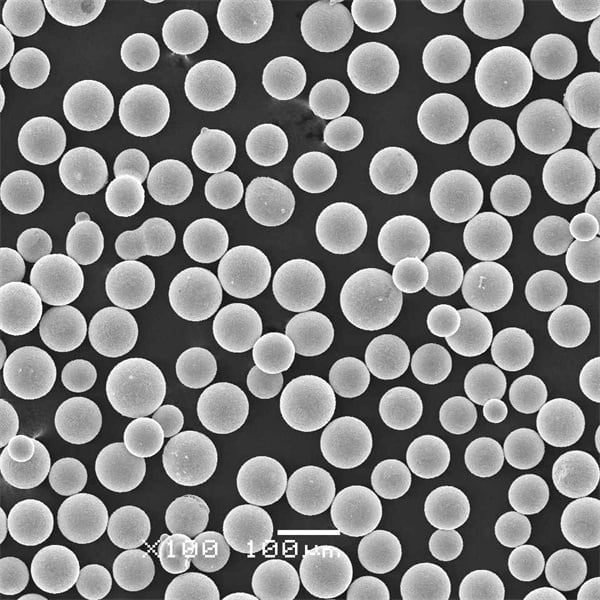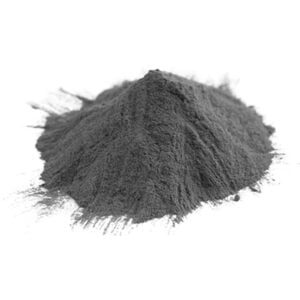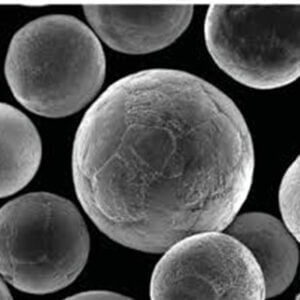Aluminium AlSi12 Powder
Aluminium AlSi12 powder is an aluminium alloy powder containing 12% silicon as its major alloying element. It is known for its excellent fluidity, low melting point, and good corrosion resistance. This guide provides detailed information on AlSi12 powder metallurgy, its composition, properties, production methods, applications, and suppliers.
Low MOQ
Provide low minimum order quantity to meet different needs.
OEM & ODM
Provide customized products and design services to meet unique customer needs.
Adequate Stock
Ensure fast order processing and provide reliable and efficient service.
Customer Satisfaction
Provide high quality products with customer satisfaction at the core.
share this product
Table of Contents
Overview of Aluminium AlSi12 Powder
Aluminium AlSi12 powder is an aluminium alloy powder containing 12% silicon as its major alloying element. It is known for its excellent fluidity, low melting point, and good corrosion resistance. This guide provides detailed information on AlSi12 powder metallurgy, its composition, properties, production methods, applications, and suppliers.
AlSi12 Powder Key Properties:
- Composition: Aluminium with 12% Si
- Melting point: Around 575°C
- Density: 2.68 g/cm3
- Excellent fluidity and castability
- Good corrosion resistance
- Low coefficient of thermal expansion
- High strength-to-weight ratio
AlSi12 Powder Composition
The table below shows the typical chemical composition of aluminium AlSi12 alloy powder:
| Element | Weight % |
|---|---|
| Aluminium (Al) | Base/Balance |
| Silicon (Si) | 11-13% |
| Iron (Fe) | 0.6% max |
| Copper (Cu) | 0.05% max |
| Manganese (Mn) | 0.10% max |
| Magnesium (Mg) | 0.10% max |
| Nickel (Ni) | 0.05% max |
| Zinc (Zn) | 0.10% max |
| Tin (Sn) | 0.05% max |
| Lead (Pb) | 0.05% max |
| Titanium (Ti) | 0.20% max |
The precise silicon content determines the alloy designation – AlSi12 contains between 11-13% silicon by weight. The remaining is aluminium making up the base. Other elements like iron, manganese, and magnesium are present only in trace quantities as impurities.
Why is silicon added to aluminium?
Silicon is strategically added to create an aluminium silicon alloy offering unique benefits:
- It lowers the melting point of pure aluminum for better castability and fluidity in molten state
- Improves strength, hardness and wear resistance
- Enhances corrosion resistance properties
- Alters coefficient of thermal expansion
Controlling silicon percentage allows customizing alloy properties for different applications during aluminium powder metallurgy.
Manufacturing Process of AlSi12 Powder
AlSi12 alloy powder is manufactured using the following standard metal powder processing techniques:
1. Gas Atomization
- Aluminium ingots are induction melted along with silicon
- The molten metal stream is disintegrated using compressed air or inert gas jets
- This leads to rapid solidification of fine droplets into powder
- Powder particle size and morphology can be controlled by process parameters
2. Water Atomization
- Similar to gas atomization, but molten metal stream is broken up by high-pressure water jets
- Leads to faster cooling and finer powders
3. Mechanical Milling
- Ball milling of aluminium and silicon metal powder mixes
- Leads to particle refinement and alloying by cold welding and fracturing
Benefits: Gas and water atomization allow high purity, alloyed, spherical and reactive powders. Mechanical milling technique is simple and cost-effective. Both methods yield fine aluminium AlSi12 powders suitable for additive manufacturing and powder injection molding.
Properties of AlSi12 Alloy Powder
Aluminium silicon AlSi12 has well-balanced physical, thermal, electrical and mechanical properties making it suitable for lightweight engineering applications:
Physical Properties
| Property | Value |
|---|---|
| Density | 2.68 g/cm3 |
| Melting Point | ~575°C |
| Coefficient of Thermal Expansion | 21-23 x 10-6 K-1 |
| Thermal Conductivity | 150-180 W/m.K |
Mechanical Properties
| Property | Value |
|---|---|
| Hardness | 80-90 Brinell |
| Tensile Strength | 210-290 MPa |
| Elongation | 1-3% |
| Elastic Modulus | 80-85 GPa |
| Poission’s Ratio | 0.33 |
| Fatigue Strength | 100-120 MPa |
Electrical Conductivity
Around 30% IACS
Lower density versus pure aluminium allows lightweighting. Excellent fluidity allows casting complex shapes. High hardness and strength combined with low weight makes AlSi12 suitable for engineering and automotive components. Moderate corrosion resistance allows use in various industrial environments.
AlSi12 Powder Particle Size Distribution
Commonly available particle size distributions:
- D10 = 20-30 μm
- D50 = 35-45 μm
- D90 up to 100 μm
Powders are spherical in shape with satelliting. Different size distributions available based on application method.
Applications of Aluminium AlSi12 Powder
The major applications of AlSi12 alloy powder include:
Automotive Parts
AlSi12 is used to manufacture the following lightweight powder metallurgy automotive parts:
| Applications | Examples |
|---|---|
| Powertrain | Gears, Bearing Caps |
| Chassis, Body | Control Arms, Steering Knuckles |
| Engine | Pistons, Connecting Rods |
| Transmission | Oil Pumps, Clutch Parts |
| Interior | Pedals, Levers, Switches |
Aerospace Components
AlSi12 sees usage in aircraft and spacecraft components, e.g. impellers, turbines.
Industrial Parts
Heat sinks, electronic housings, mechanical seals, hydraulics, valves, tooling jigs etc.
Medical Devices
Low weight and biocompatibility allows usage for prosthetics and implants.
Advantages Driving Usage
The major factors promoting adoption of AlSi12 powder include:
- Lightweighting versus cast iron/steel parts
- Mechanically strong, wear and heat resistant
- Enables complex, net-shape powder metallurgy parts
- Cost-effectiveness
- Customization of alloy composition possible
The automotive sector is the biggest adopter of AlSi12 alloys for vehicle light-weighting.
AlSi12 Powder Fabrication Methods
AlSi12 alloy powder can be consolidated into end-use components using the following powder metallurgy techniques:
1. Metal Injection Molding (MIM)
- Mixing fine powder with binder into feedstock
- Molding using injection molding machine
- Debinding and sintering
Allows complex, high volume micro parts with net-shape capability.
Typical density achieved: ≥99% Dimensional accuracy: ±0.5%
Applications: Small intricate automotive and electronic parts like gears and locks.
2. Additive Manufacturing
- Direct metal printing using laser/e-beam based powder bed fusion
- No mold required
- Layer-by-layer selective melting and consolidation
Enables customized, rapidly prototyped parts with complex geometries.
Density: 90-95% Resolution: 50 μm vertically
Applications: Aerospace brackets, automotive prototypes, biomedical implants
3. Powder Forging
- Compacting of powder metal into preforms
- Hot forging preforms into high-density components
Suitable for automotive connecting rods and bearings.
Density achieved: ≥96% Production rate: High
4. Cold/Warm Compaction
Applications such as self-lubricating bearings with controlled porosity.
5. Aluminum Cylinder Bores
AlSi12 liners are made by centrifugal casting process into alloyed steel engine blocks for light-weight, fuel-efficient engines.
Standards and Specifications
Industrial grade AlSi12 alloy powder manufactured by reputed global suppliers conforms to the following specifications:
| Standard | Description |
|---|---|
| ASTM B601 | Chemical compositions and forms of aluminium alloy powders |
| ASTM B214 | Sieve analysis, moisture content |
| EN 1611 | Technical conditions for inspection and delivery |
Customization
- Chemical composition tailored as per application requirements
- Particle size distribution adjusted based on production process needs
High purity medical grade powders specifically tested for biocompatibility are also available.
Comparing AlSi12 Powder with Alternatives
AlSi12 powder is compared below with substitute aluminium alloys and other materials to highlight differences:
Versus Other Aluminium Powders
| Parameter | AlSi12 | AlSi10Mg | Al6061 |
|---|---|---|---|
| Silicon content | High at 12% | Lower | Some Si |
| Strength | High | Higher | Medium |
| Corrosion resistance | Good | Excellent | Excellent |
| Weldability | Poor | Excellent | Good |
| Castability | Excellent | Good | Medium |
| Cost | Low | High | Medium |
- AlSi12 competes on cost and castability requirements
- AlSi10Mg preferred for additive manufacturing applications demanding strength and corrosion resistance
- 6xxx series selected where weldability is critical
Versus Steel Powders
| Parameter | AlSi12 | Stainless Steel | Tool Steel |
|---|---|---|---|
| Density | Lightweight | Heavy | Heavy |
| Price | Cost effective | Expensive | Very expensive |
| Strength | Moderate | Very high | Extreme |
| Hardness | Low | High | Very high |
| Corrosion | Better | Best | Prone to rusting |
| Magnetic | No | Yes | Yes |
- AlSi12 provides an optimal balance of properties versus cost
- Steel clearly surpasses aluminium in hardness and strength
- Density advantage makes AlSi12 suitable for light-weighting
Competitive Materials Comparison
| Parameter | AlSi12 | Cast Iron | Plastics |
|---|---|---|---|
| Raw Material Cost | Economical | Cheap | Cheapest |
| Production Process | Complex | Easy | Easy |
| Strength | Medium | High | Low |
| Thermal Conductivity | Excellent | Poor | Poor |
| Corrosion Resistance | Fair | Poor | Great |
| Thermal Expansion | Moderate | High | Varies |
| Electrical Conductivity | 30% IACS | Low | Insulator |
- AlSi12 easier to mold into complex shapes versus cast iron
- Plastics easiest to manufacture but properties extremely limited
- AlSi12 provides well-balanced performance at moderate cost
Limitations and Downsides
Despite the benefits, certain downsides associated with AlSi12 powder include:
Fabrication Difficulties
- Narrow sintering window
- Large shrinkage during PIM
- Low oxidation resistance
- Poor weldability
- Preheating may be needed for welding
Average Mechanical Properties
- Tensile strength lower than aluminium alloys like AlSi10Mg
- Prone to silicate formation affecting ductility
- Not suitable for high wear resistance or load-bearing applications
Thermal Management
- High thermal expansion coefficient necessitates design considerations
- Low melting point limits high temperature uses
Surface Finish
- AlSi12 parts typically need secondary machining to improve surface smoothness
- Lower as-sintered finish than other aluminium or steel powder
FAQ
Here are answers to some common questions about AlSi12 powder:
Q. Why is AlSi12 preferred over other Al alloys for automotive parts?
AlSi12 provides the optimum balance of mechanical properties, corrosion resistance, castability, and cost required for high volume automotive components. The high silicon content imparts good wear resistance combined with low density.
Q. Is AlSi12 powder compatible with additive manufacturing?
Yes, AlSi12 powder can be used in DMLS, SLM and binder-jetting 3D printers. The fluidity and narrow melting range offers benefits over other aluminium alloys. Although porosity levels are higher than alloys like AlSi10Mg.
Q. What is the typical surface finish achieved in metal injection molding?
AlSi12 parts have moderate as-sintered surface roughness around 4-6 microns Ra. Secondary operations like shot peening, polishing and coatings are often implemented.
Q. Can AlSi12 parts be welded or machined?
Welding AlSi12 requires preheating at 200-300°C to avoid cracking. Machinability is fair – using sharp tools and coolants is advised to get good finishes.
Q. What are common post-processing steps for AlSi12 powder parts?
Infiltration with aluminum-silicon alloys, copper plating, heat treatment, anodizing and shot peening are popular. Painting and powder coating further improves corrosion protection.
Q. What is the typical production volume capacity for automotive PIM parts?
AlSi12 is suitable for producing more than 100,000+ precision automotive parts annually via PIM process for small complex geometries.
Get Latest Price
About Met3DP
Product Category
HOT SALE
CONTACT US
Any questions? Send us message now! We’ll serve your request with a whole team after receiving your message.

Metal Powders for 3D Printing and Additive Manufacturing
COMPANY
PRODUCT
cONTACT INFO
- Qingdao City, Shandong, China
- [email protected]
- [email protected]
- +86 19116340731













